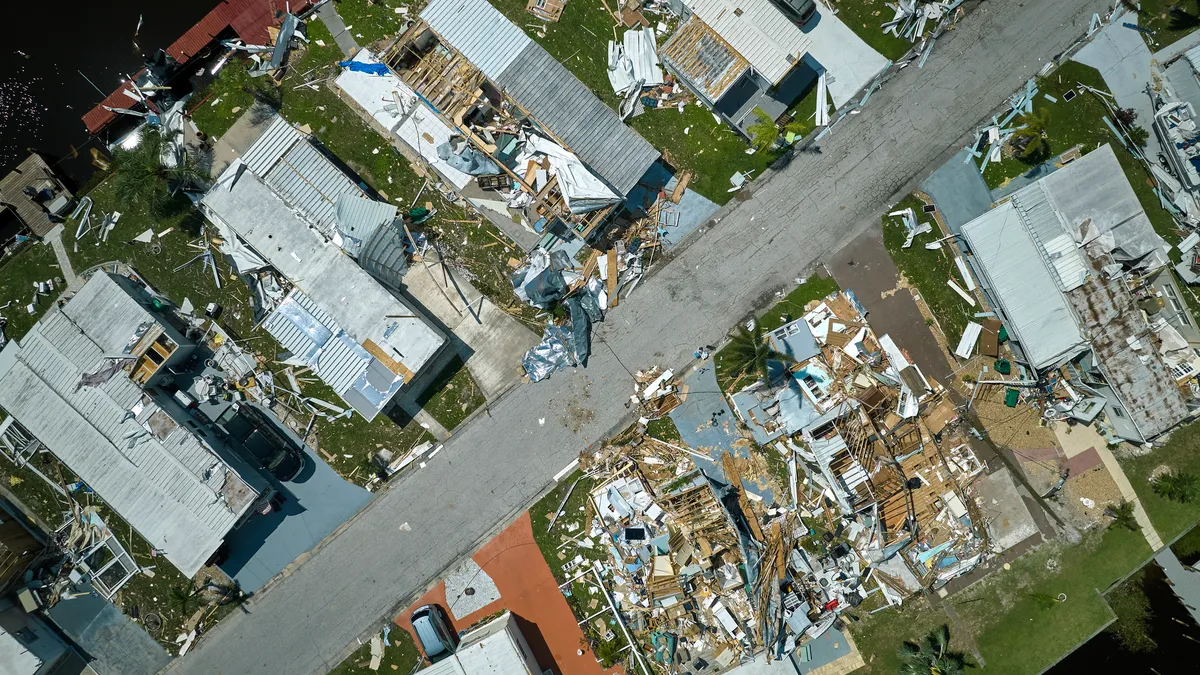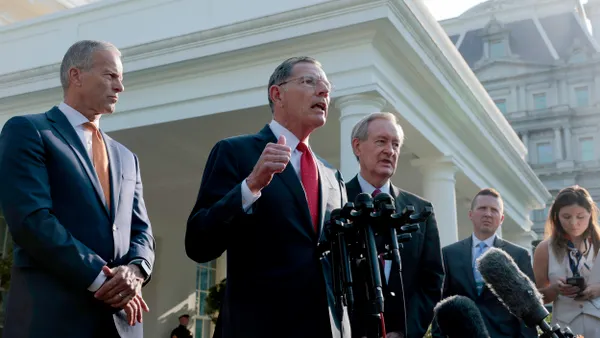Dive Brief:
- The first “community disaster resilience zones” were announced Wednesday by the Federal Emergency Management Agency and are available to view on an interactive online map.
- The agency determined these 483 census tracts spanning D.C. and all 50 states face the highest risk from climate change impacts and have the most need for assistance — and thus will get prioritized access to federal funding for climate resilience and mitigation projects.
- More zones, including tribal lands and territories, will be announced this fall, according to FEMA. Even more will be designated in 12 to 18 months, following updates to the National Risk Index, lessons learned from current zones and stakeholder input.
Dive Insight:
Disaster is top of mind for officials across the country following a summer ridden with extreme weather events. Resources to improve local disaster resilience, however, are finite. In the wake of multiple hurricanes and the devastating Maui wildfires, FEMA is restricting disaster spending as its funds are “approaching exhaustion,” POLITICO reported last week.
The community disaster resilience zones are meant to help the federal government determine which areas most need limited resources. Congress directed FEMA in December 2022 to identify such communities through the Community Disaster Resilience Zones Act. The act “aims to increase resilience efforts and preventative measures designed to address underserved communities most at risk to natural hazards,” FEMA said in a press release.
A census tract is designated as a community disaster resilience zone if it is both identified as a disadvantaged community by the federal Climate and Economic Justice Screening Tool, and if its National Risk Index score ranks in the top 50 nationally or in the top 1% in its state. The National Risk Index is an online mapping tool that shows which communities are most at risk of 18 natural hazards. FEMA plans to update it soon with more data on tsunami and riverine flood risk, according to the agency.
The community disaster resilience zone designations will help FEMA direct and manage technical and financial assistance for disaster resilience projects, the agency said.
“For example, for federal agencies, the legislation provides additional federal cost-share for projects in designated zones,” FEMA said. “The zone designations can also help the private sector, nonprofits, philanthropies, and other non-federal partners target investments in community resilience.”
In the coming weeks, FEMA and its partners will reach out to designated communities to make sure they understand what the designation means and the opportunities available to them.











